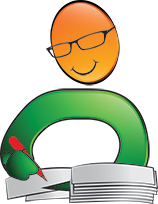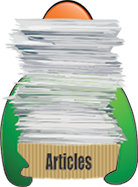Author Services

Proofreading, Editing, Critique
Getting help with your book from a professional editor is always recommended but often just too expensive. We have partnered with a professional editor with 30 years of experience to provide quality writing services at affordable prices.
Visit our Writing Services Page
Hundreds of Helpful Articles
We have created hundreds of articles on topics all authors face in today’s literary landscape. Get help and advice on Writing, Marketing, Publishing, Social Networking, and more. Each article has a Comments section so you can read advice from other authors and leave your own.
The Dangers of Using AI to Create a Children’s Picture Book
Artificial Intelligence (AI) is being touted across the Internet as the latest way to make easy money. Like any get-rich-quick scheme, it is not the real path to easy money. One major area where AI is being used to create poor books is in the children’s picture book genre. Having a picture book illustrated by a professional is costly and takes time. Paying for a month’s subscription to image-generating AI or using free tools on the web might seem like a quick and easy alternative, but there are many problems with this approach.
First, understand that you cannot copyright AI-created works. What that means is someone can simply erase all the text in your picture book (or use that, too, if it was AI-generated), write something else—even if it is on the same topic, and sell that book without infringing on your copyright because you do not have one. They can also reuse any of the pictures however they want because no one owns them. It does not matter that you spent three hours hitting the “generate” button to get just the right look. It doesn’t matter if you saved the main character to use in other books. You can trademark the character, but that costs $350 for each application and you would have to have multiple applications to keep it from being used in something other than books (like games or toys).
The second problem is that AI-generated images are frequently based on other artwork. That means that although you cannot copyright it, you may be sued for plagiarism if the artwork the AI borrowed from is too similar to the original artwork. In this case, you would not only have to pay for your legal fees and the legal fees of the original artist who is suing you, but you would also have to pay royalties for past and future sales and you may be told you cannot continue selling your book and have to destroy all known copies of it (digital and physical).
Even without all the negative legal implications, using AI to create pictures for children’s books is not a good idea. AI does not understand the complexities of real life. AI-generated images of people will often have more or fewer than ten fingers and toes. Animals and people will be missing legs (or have extras), noses will meld into mouths, and tails will be coming out of ears. Although you may catch some of these anomalies, I have found them in almost every AI-generated picture book I have read. Then, there are random shadows or scary things that AI will add to the background. Trees that float above the ground, optical illusions, and humans that have musical instruments coming out of their chests are all AI-generated nightmares that could scare or confuse your intended audience. Finally, there are many times when the picture does not match the text. I presume this is because of what the author put in the text instead of a description of the desired picture, but it could also be that the author just didn’t pay attention to what they had written when matching the picture to it. Either way, it can lead to bad reviews and low sales.
Written by Readers’ Favorite Reviewer Jennifer Reinoehl